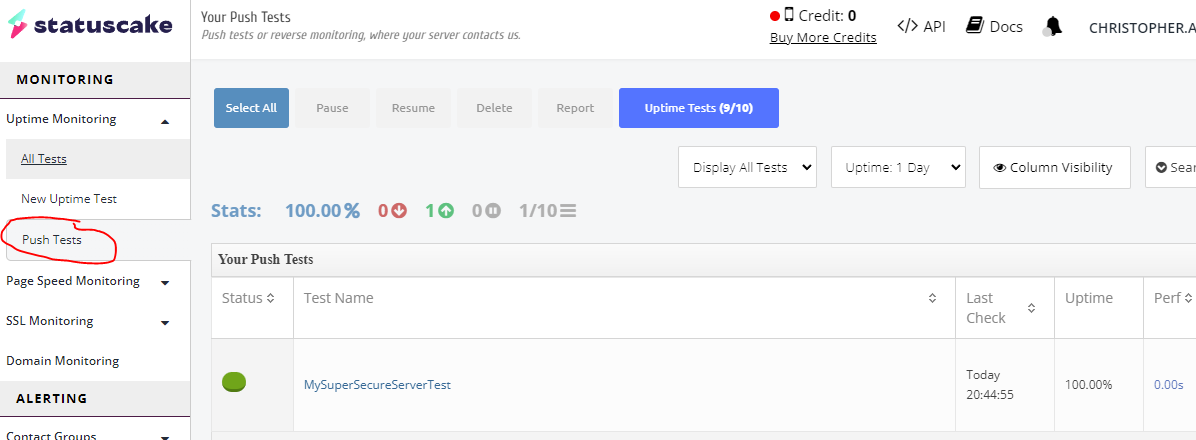
With Black Friday and Cyber Monday just behind us, and the Christmas and January sales on the horizon, the cost of downtime is a question that should be of concern to all business owners and e-commerce managers. It should be a concern, but is website downtime always given the consideration it deserves in your business?
A company website is a critical component of any modern business, but for businesses who rely on online sales, it really is of paramount importance. The continued success of your business depends upon the ability of your website to remain fully operational, to be able to deliver the seamless experience that your online visitors have come to expect from your website.
Once your website fails to meet those expectations, however briefly, the ramifications for your business can be significant, resulting in revenue loss, damage to your brand reputation, and even a decline in search rankings.
In this article, we’ll take a look at how we calculate website downtime and how that translates into meaningful data for your business.
How is Website Downtime Calculated?
Before we attempt to understand the cost of website downtime, it may be helpful to look at how downtime itself is calculated. Here at Scopify, we specialise in website monitoring and have unparalleled experience in analysing website downtime across different industries and sectors.
Website uptime is generally measured as a percentage. This percentage is calculated by the number of times the availability of a particular website was tested, divided by the number of times an error was recorded. For example, a website which was available every time it was tested would return a website uptime average of 100 percent, while a domain that was down every time a test was performed returns an average website uptime of 0 percent.
Calculating the Cost of Website Downtime
Using the aforementioned calculation, we are able to measure how often websites are online as a percentage, but how can that be converted into units of time, and later, sales and revenue? As website uptime specialists, we have created our own Uptime and Downtime Cheat Sheet, a resource which we can use to translate uptime percentages into monthly and yearly downtime in days, hours and minutes.
Here’s how average uptime scores translate periods of downtime on a monthly and yearly basis:
- 99 percent uptime: 7 hours, 12 minutes downtime. 3 days, 15 hours and 36 minutes of yearly downtime.
- 98 percent uptime: 14 hours, 25 minutes downtime. 7 days, 7 hours and 12 minutes of yearly downtime.
- 97 percent uptime: 21 hours, 36 minutes downtime. 10 days, 22 hours and 48 minutes of yearly downtime.
- 96 percent uptime: 1 day, 4 hours and 48 minutes of monthly downtime. 14 days, 14 hours and 24 minutes of yearly downtime.
- 95 percent uptime: 1 day, 12 hours of monthly downtime. 18 days, 6 hours of yearly downtime.
In these calculations, you can clearly see how a short period of website downtime can quickly add up over a period of weeks and months into a significant period of time in which your website is out of action. 99.9 percent uptime is generally considered to be a very competitive average, but even this level of downtime results in 8 hours and 46 minutes of downtime over the course of a year. Is your website meeting that target, or are you falling below it?
It is often said that time is money, and nowhere is that more applicable than in the world of online sales. Website downtime truly does come at a high cost, with the cost incurred to your sales, reputation and search engine rankings increasing exponentially the longer your website is offline.
When it comes to calculating potential revenue lost following a period of downtime, the picture is slightly more complex. Here, there is no absolute figure which can be used to accurately determine an average, and will vary hugely according to the duration of downtime, the time of day and the date. Website downtime which occurs in the early hours of a Sunday morning, for example, will not be as catastrophic for your bottom line as downtime during peak hours of the Black Friday sales.
The volume of sales generated by your website is also another variable to consider. For example, if you generate an average of £1,000 in revenue per hour, then every minute your website is offline is an average cost of £16.66 in lost sales. In this calculation, lost revenue increases rapidly for larger businesses, with any sustained period of downtime quickly adding up to eye-watering amounts. To take one of the most extreme examples of this fact, a period of downtime for e-commerce giant Amazon on ‘Prime Day’ is estimated to have cost the retailer as much as $100 million in lost sales!
Clearly, armed information presented in this article, the uptime of your website should not be considered as an afterthought, but as a pressing priority that could make or break your business. Seen in this context, the cost of a dedicated website monitoring service such as that provided by Scopify should be seen as a long term investment rather than an unnecessary expense. Time is money online, and few businesses can afford to leave money on the table due to unscheduled website downtime.
Scopify provides a suite of performance monitoring tools which are easy to set-up and use, and provide you with invaluable insights into how your website performance is impacting your customers’ experiences. Our free plan includes a range of free tools, including page speed monitoring, while our paid plans include SSL Monitoring, Server Monitoring, Domain Monitoring and Virus Scanning.
Click here, to start your free trial today.




